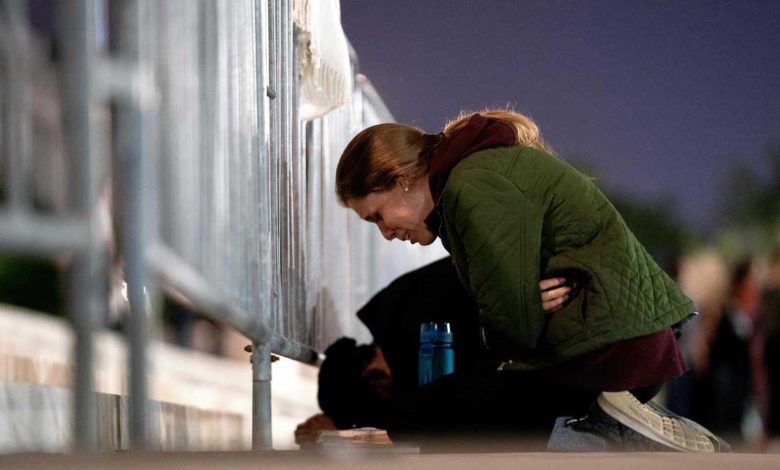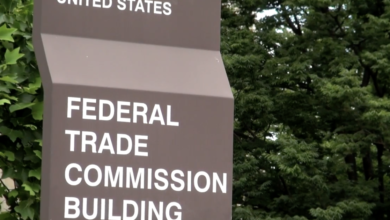

The Supreme Court appears to be on the cusp of ending its 49-year-old legal precedent that protects abortion rights nationwide if the majority signs on to a draft opinion obtained and published by Politico on Monday.The revelation of the draft opinion does not have an immediate effect on abortion access. If the apparent majority willing to overturn Roe v. Wade stays firm, the precedent would not be overturned until the formal release of the court's ruling, which is likely to come in June.But the ruling previewed in the draft authored by Justice Samuel Alito would upend abortion access by giving states the ability to decide how aggressively to restrict access to the procedure. Here's what to know.What is the draft opinion?A draft opinion is just what it sounds like, an opinion that is still in the works and has not been finalized. Politico obtained and published what it described as a draft Supreme Court majority opinion striking down Roe v. Wade. It was written by conservative Justice Samuel Alito and circulated among the justices in February.Notably, the opinion is a draft and the court's votes are not final until the formal opinions are officially released. Drafts are often amended and changed based on the input of the other justices. In some instances, justices have switched sides before an opinion is issued, such as when Chief Justice John Roberts flipped and saved Obamacare in 2012.The opinion in the case in question, Dobbs v. Jackson, is a challenge to Mississippi's 15-week abortion ban. The state had asked the justices to use the case to reverse the 1973 Roe v. Wade ruling -- and the 1992 Planned Parenthood v. Casey ruling upholding Roe -- that together guarantee a right to an abortion before a fetus is viable.What does the draft mean immediately for abortion rights?Until a final opinion is released, Roe v. Wade remains the law of the land. Justices can, and have in the past, changed their votes after initial draft opinions are circulated.But the revelation of where the court is likely headed will undoubtedly supercharge what have been contentious fights in state legislatures over how to prepare for a ruling that overturns Roe and put abortion at the forefront of the national political discourse as the country awaits the final ruling.What does the draft signal about where the court is going on Roe?The draft signals that there were at least five votes for overturning Roe when the justices privately convened after the case's oral arguments, which were held in December.Under normal procedures, by the end of that week, the justices would have met in their private conference to take a preliminary vote on the issue.They would have gone around the table in order of seniority discussing their views on the case. Roberts, as chief justice, would have gone first. After that initial tally, if the chief was in the majority, he would assign the majority opinion. Otherwise, the most senior justice would have that responsibility. After that, drafts go between justices' chambers. In the past, justices have changed their votes and sometimes a majority opinion ultimately becomes a dissent.It appears, according to Politico's report, that five justices were willing to vote to overturn Roe. Roberts did not want to completely overturn Roe v. Wade, sources tell CNN. At the same time, he wants to uphold the Mississippi law. That would leave the four justices willing to join an Alito opinion overturning Roe outright to be Justices Clarence Thomas, Neil Gorsuch, Brett Kavanaugh and Amy Coney Barrett.What will happen to abortion access if the court overrules Roe?Abortion access would depend on where you live in the country. In the draft opinion, Alito writes that the Constitution makes no reference to abortion and no such right is implicitly protected by any constitutional provision: "It is time to heed the Constitution and return the issue of abortion to the people's representatives."That would mean state legislatures could choose for themselves how much to restrict abortion access. Several states are poised to implement extreme limits or outright bans on the procedure. Some states have on their books so-called trigger bans, which would put into effect prohibitions on abortion if and when the Supreme Court releases a formal opinion overturning Roe.Activity around passing restrictive laws in red states picked up after the Dobbs case was taken up for review and after oral arguments suggested the conservative wing may have had five voters to overturn Roe.For instance, Kentucky and other states passed 15-week bans, like the Mississippi law before the Supreme Court, while other state legislatures sought to bar abortion earlier in the pregnancy. Some of those laws, including Kentucky's, have already been blocked by federal courts that cited the existing Supreme Court abortion precedent that has not yet been overturned.On the other side of the spectrum, Democratic-led states are considering proposals to shore up abortion rights. Connecticut's legislature recently approved legislation to make abortions easier to obtain in the state and that would protect their abortion provider from the anti-abortion laws of other states. Similar proposals are under consideration in New York, California and elsewhere.Some purple states might take a middle ground approach, stopping short of banning abortion outright, but limiting at earlier points in the pregnancy than what was previously allowed under the line current precedent draws at viability, a point around 23 weeks into pregnancy.
The Supreme Court appears to be on the cusp of ending its 49-year-old legal precedent that protects abortion rights nationwide if the majority signs on to a draft opinion obtained and published by Politico on Monday.
The revelation of the draft opinion does not have an immediate effect on abortion access. If the apparent majority willing to overturn Roe v. Wade stays firm, the precedent would not be overturned until the formal release of the court's ruling, which is likely to come in June.
But the ruling previewed in the draft authored by Justice Samuel Alito would upend abortion access by giving states the ability to decide how aggressively to restrict access to the procedure. Here's what to know.
What is the draft opinion?
A draft opinion is just what it sounds like, an opinion that is still in the works and has not been finalized. Politico obtained and published what it described as a draft Supreme Court majority opinion striking down Roe v. Wade. It was written by conservative Justice Samuel Alito and circulated among the justices in February.
Notably, the opinion is a draft and the court's votes are not final until the formal opinions are officially released. Drafts are often amended and changed based on the input of the other justices. In some instances, justices have switched sides before an opinion is issued, such as when Chief Justice John Roberts flipped and saved Obamacare in 2012.
The opinion in the case in question, Dobbs v. Jackson, is a challenge to Mississippi's 15-week abortion ban. The state had asked the justices to use the case to reverse the 1973 Roe v. Wade ruling -- and the 1992 Planned Parenthood v. Casey ruling upholding Roe -- that together guarantee a right to an abortion before a fetus is viable.
What does the draft mean immediately for abortion rights?
Until a final opinion is released, Roe v. Wade remains the law of the land. Justices can, and have in the past, changed their votes after initial draft opinions are circulated.
But the revelation of where the court is likely headed will undoubtedly supercharge what have been contentious fights in state legislatures over how to prepare for a ruling that overturns Roe and put abortion at the forefront of the national political discourse as the country awaits the final ruling.
What does the draft signal about where the court is going on Roe?
The draft signals that there were at least five votes for overturning Roe when the justices privately convened after the case's oral arguments, which were held in December.
Under normal procedures, by the end of that week, the justices would have met in their private conference to take a preliminary vote on the issue.
They would have gone around the table in order of seniority discussing their views on the case. Roberts, as chief justice, would have gone first. After that initial tally, if the chief was in the majority, he would assign the majority opinion. Otherwise, the most senior justice would have that responsibility. After that, drafts go between justices' chambers. In the past, justices have changed their votes and sometimes a majority opinion ultimately becomes a dissent.
It appears, according to Politico's report, that five justices were willing to vote to overturn Roe. Roberts did not want to completely overturn Roe v. Wade, sources tell CNN. At the same time, he wants to uphold the Mississippi law. That would leave the four justices willing to join an Alito opinion overturning Roe outright to be Justices Clarence Thomas, Neil Gorsuch, Brett Kavanaugh and Amy Coney Barrett.
What will happen to abortion access if the court overrules Roe?
Abortion access would depend on where you live in the country. In the draft opinion, Alito writes that the Constitution makes no reference to abortion and no such right is implicitly protected by any constitutional provision: "It is time to heed the Constitution and return the issue of abortion to the people's representatives."
That would mean state legislatures could choose for themselves how much to restrict abortion access. Several states are poised to implement extreme limits or outright bans on the procedure. Some states have on their books so-called trigger bans, which would put into effect prohibitions on abortion if and when the Supreme Court releases a formal opinion overturning Roe.
Activity around passing restrictive laws in red states picked up after the Dobbs case was taken up for review and after oral arguments suggested the conservative wing may have had five voters to overturn Roe.
For instance, Kentucky and other states passed 15-week bans, like the Mississippi law before the Supreme Court, while other state legislatures sought to bar abortion earlier in the pregnancy. Some of those laws, including Kentucky's, have already been blocked by federal courts that cited the existing Supreme Court abortion precedent that has not yet been overturned.
On the other side of the spectrum, Democratic-led states are considering proposals to shore up abortion rights. Connecticut's legislature recently approved legislation to make abortions easier to obtain in the state and that would protect their abortion provider from the anti-abortion laws of other states. Similar proposals are under consideration in New York, California and elsewhere.
Some purple states might take a middle ground approach, stopping short of banning abortion outright, but limiting at earlier points in the pregnancy than what was previously allowed under the line current precedent draws at viability, a point around 23 weeks into pregnancy.
Source link








